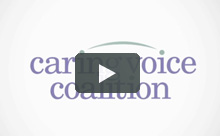In Your Words: Elaine Kelley
Sixteen-year-old Elaine Kelley’s narcolepsy symptoms first appeared in July 2011, shortly before she started her freshman year of high school in Tulsa, Oklahoma.
“The first thing I noticed was the cataplexy,” she recalls. “It came on very suddenly. Laughing would make me very weak, and I thought that was strange. Then it just progressively got worse.
“I told my mom about it. Then I also started sleeping a lot during the day. We thought that was strange too.”

From from left to right: Elaine Kelley's mother, Vickie Kelley; brother, Joe Kelley; father, Marshall Kelley; and Elaine.
The cataplexy attacks first occurred at home and at her cousin’s house. Then, Elaine says, “It happened big time when we were shopping for school shoes, and I was yelling for my mom, asking her to come look.” Fortunately, Elaine wasn’t hurt when she collapsed in the shoe store, but she says, “That’s when we knew it was serious.
“One night I had a cataplexy attack, and my dad saw it for the first time. He wanted to take me to the hospital. We were just going to go to an urgent care center, but it was closed.
“The next day, we called my pediatrician, and she wanted me to check into the hospital. I checked in the next day and went through a 24-hour EKG and an EEG and spent the night there. They couldn’t find anything. They had a recording of me having cataplexy and still couldn’t figure it out, because they had never seen it before.
“They thought it was epilepsy, anemia, or something neurological, but everything came back normal. They might have said that it could be narcolepsy, but they never said ‘cataplexy.’
Elaine explains how she ended up essentially diagnosing herself. “I started googling ‘laughing and falling,’ and that’s when I came across cataplexy. So I looked into that because there was a story about a lady who had it.
“We called my pediatrician; she referred us to a sleep specialist, and I took the sleep test. I was lucky to figure it out pretty quickly, after a few months of the symptoms, because school had started.
Elaine did have cataplexy episodes at school, but luckily, she was in the bathroom with friends when they occurred. “All my friends knew about it and were supportive, which was nice,” she recalls.
She describes her initial attempts to prevent the cataplexy on her own. “It took a lot of self-control to try to not let it happen. I would clench my fists really tight if I felt it coming on and tighten my body so I wouldn’t lose muscle control. I noticed that it did help a little.
“But once I got the right medication and figured all that out, the cataplexy has never gone back to the way it was when it was at its worst.
“I still have daytime sleepiness, but a 30-minute nap once a day helps that. I still notice that when I laugh, sometimes I lose control of my facial muscles a little bit.
“I’m very lucky. I have a strong support system with my friends and family. I play soccer. I like to babysit. I like spending time with my friends.
“I want to go to college. I really love history, so I want to major in that. My reach school is Brown; that’s what I’m shooting for. If not, I’ll probably go to the University of Oklahoma or the University of Kansas—somewhere close to home.

From left to right: Elaine Kelley; brother, Joe; and mother, Vickie.
“When I first was diagnosed, my dad sent out an email letting all my teachers know. They were all really curious. There was actually another kid who graduated last year who had narcolepsy, and I was able to talk to him about it.
“People ask me about it a lot. I have no problems explaining it.
There was a rumor at school that when I get excited, I fall asleep. That’s what some kids twisted cataplexy into. I set everyone straight.
Elaine says there are a couple of things she’d like people to know about narcolepsy: “I’d like to make it clear that I don’t fall asleep standing up, because a lot of people ask me that.”
She also says that if there’s one thing she’d like people to be aware of, it’s to be thankful to have a sleep cycle. “Because I sure do miss that.”
For those teens and children who’ve been diagnosed with narcolepsy, she adds, “Don’t be ashamed or embarrassed that you have it. I struggled with that. But if you’re confident about it, it makes it a lot easier.” —EL
Comments to our stories are welcomed, and are intended to offer a forum for engaging readers in the conversation. While we do not actively moderate comments, we do ask that they remain respectful and civil. Every person’s journey is unique, and each perspective is valuable to us. We will not approve comments that contain profanity, could be considered abusive, are threatening in nature, or otherwise violate the terms of our Privacy Policy. If you view a comment that seems to violate these terms, we encourage you to contact us and we will review it.











An amazing story told by an amazing young lady! Thank you Elaine for having the courage to share with others.
Thank you for sharing how difficult it can be to be diagnosed correctly ,and the lack of testing needed for proper treatment .I had struggled for many years traveling from one doctor or clinic or hospital without any success even though I am one of the few with all 4 symptoms ,go figure .BUT thank GOD upon being short of believing I was going insane did I get correctly diagnosed following Hallucinations which in reality were actually hypnagogic hallucinations a symptom of narcolepsy . Good luck in your recovery .
I would like to thank CARINGVOICE support team for financial help and moral support which is no doubt a blessing and each member I believe a living Angel .